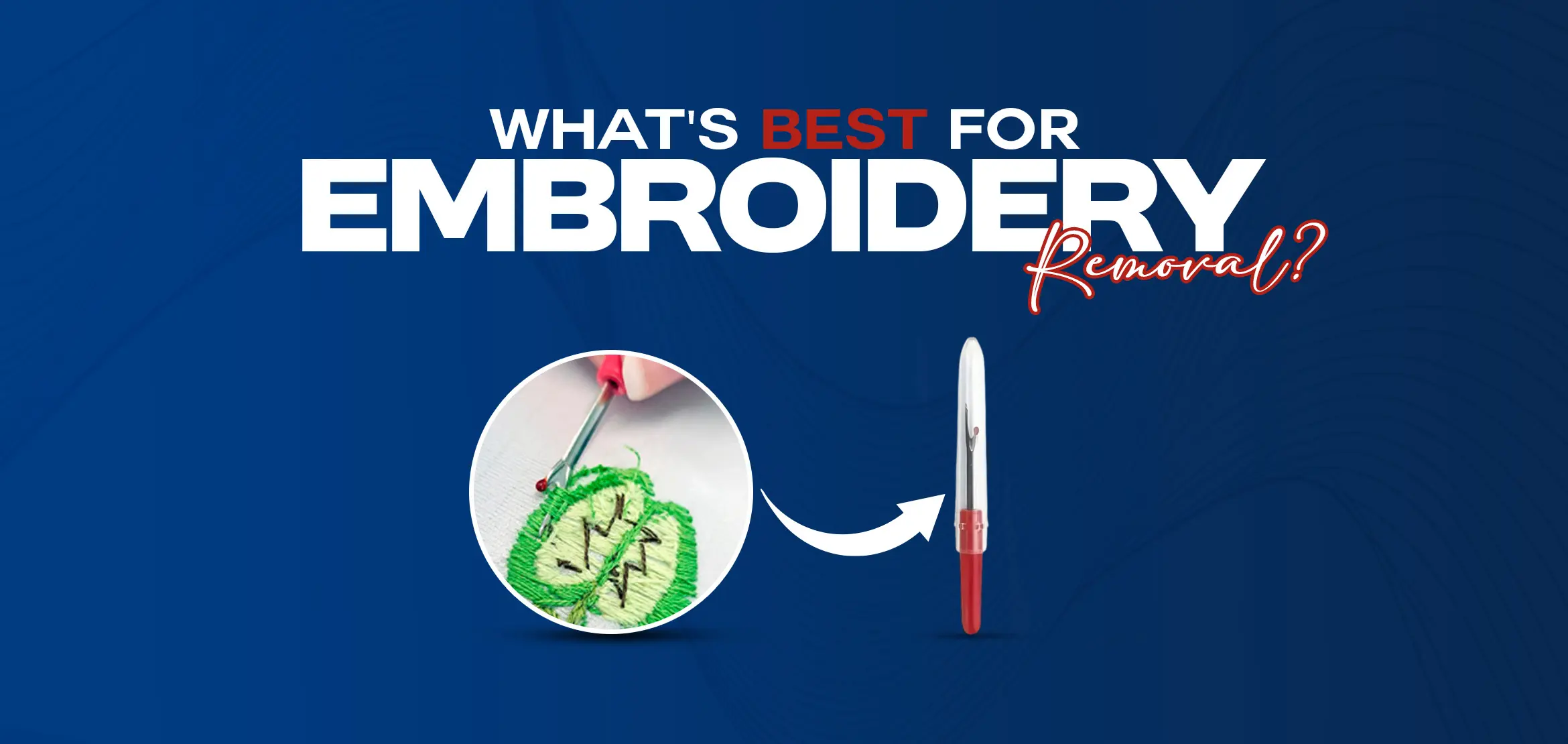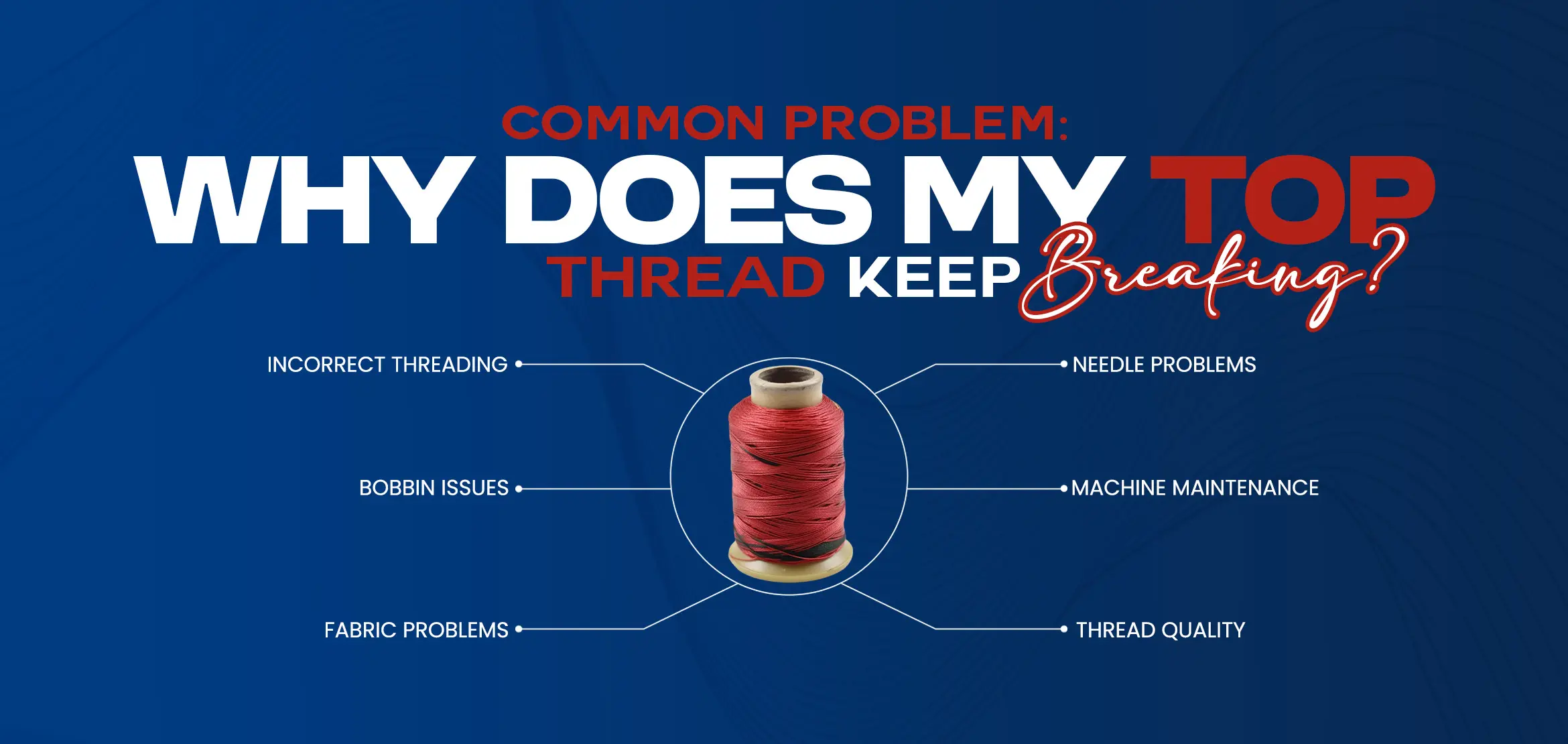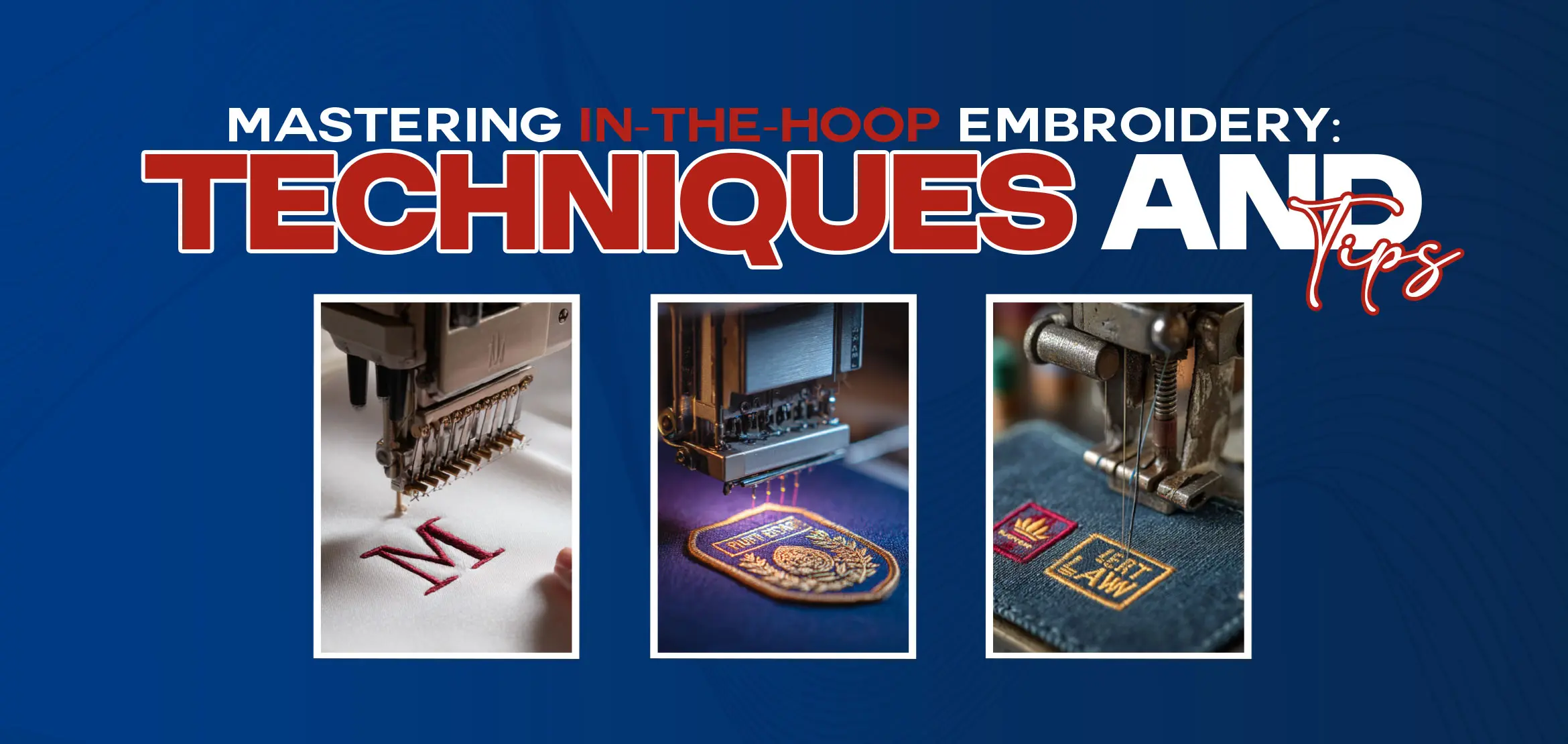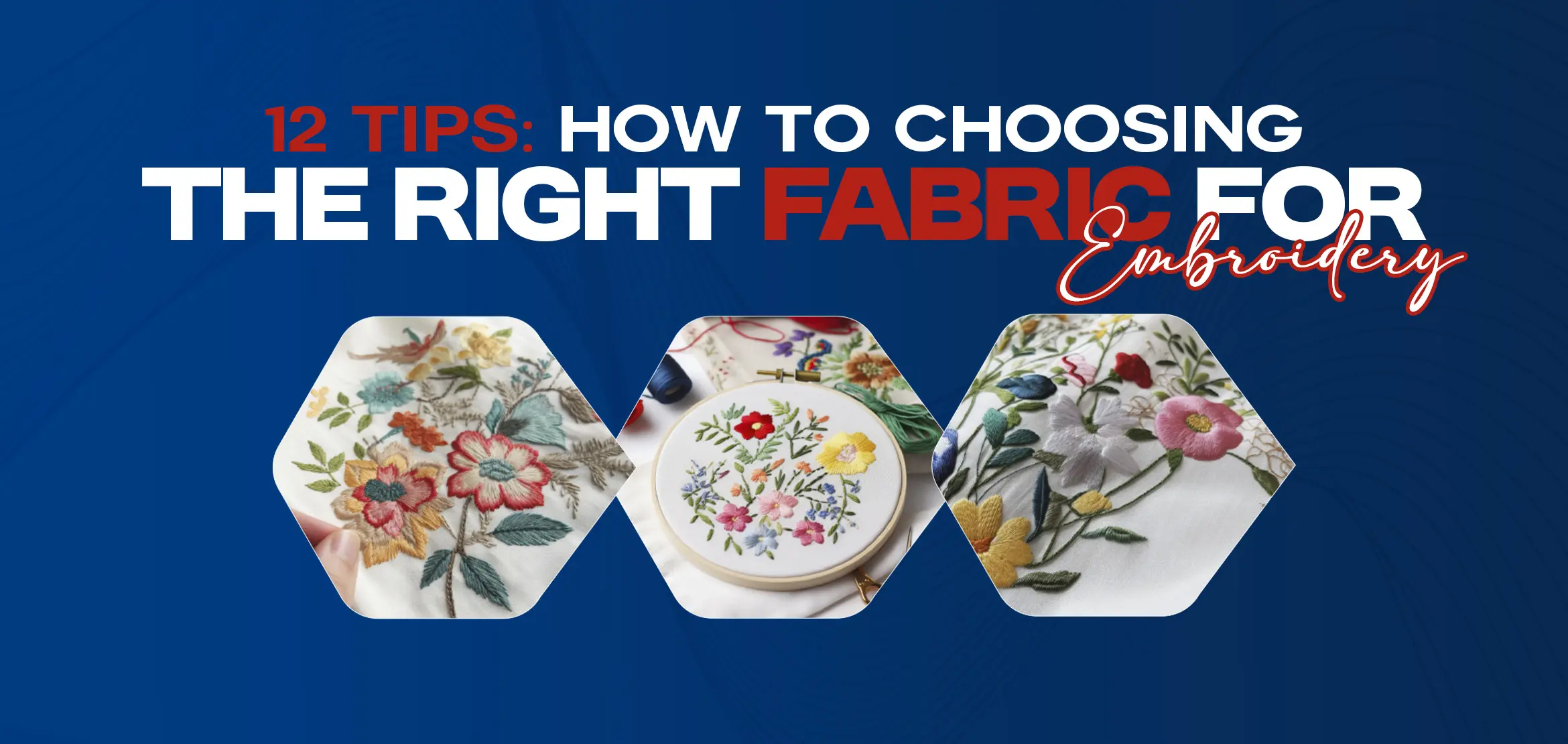
Embroidery Stitches - Types and Pro Tips
Table Of Content
- Types of Embroidery Stitches
- Basic Embroidery Stitches
- 1. Running Stitch
- 2. Backstitch
- 3. Split Stitch
- 4. Chain Stitch
- 5. Satin Stitch
- 6. French Knots
- Cross Stitches
- Overview of Cross-Stitching
- Preparing for a Cross-Stitch Project
- 1. Preparing the fabric
- 2. Separating the embroidery floss
- 3. Threading the needle
- 4. Transferring the pattern
- Basic Cross-Stitch Technique
- Finishing Touches on Your Cross-Stitch Projects
- 1. Secure Loose Ends
- 2. Neat Back
- 3. Blocking
- 4. Ironing
- 5. Embellishments
- Machine Embroidery vs. Hand Embroidery
- Conclusion
- FAQs (Frequently Asked Questions)
Embroidery stitches are the foundation of any embroidery project, and mastering these techniques is essential for creating beautiful designs. These stitches are created by using a needle and thread to create various patterns and designs on a piece of fabric. Whether you are a beginner or an experienced embroiderer. Understanding different embroidery stitches and their uses can take your creations to the next level. From basic stitches like the running stitch and stem stitch to more intricate techniques like French knots and cross stitches. Each stitch adds a unique texture and dimension to your embroidery piece. In this article, we will explore various embroidery stitches, techniques, and pro tips to help you elevate your embroidery skills. Embroidery stitches are diverse and versatile, allowing for countless creative possibilities. Whether you are a beginner or an experienced embroiderer. Understanding different stitch types and techniques can elevate your projects to new heights. When using embroidery stitches, consider your fabric and thread materials. Choose a fabric that suits your project, such as cotton for a crisp look or linen for a rustic feel. Embroidery hoops are essential for keeping the fabric taut and preventing wrinkles. Additionally, select the appropriate embroidery thread, whether it be embroidery floss or specialized threads, to achieve the desired effect. Let's explore various embroidery stitches: Embroidery is an art form that allows you to express your creativity through fabric and thread. At its core. Embroidery involves using basic stitches to create intricate designs and patterns. These stitches serve as the foundation for any embroidery project, whether you are a beginner or an experienced embroiderer. Learning and mastering basic stitches is essential to building your skills and creating beautiful embroidery pieces. 1. Running Stitch 2. Backstitch 3. Split Stitch 4. Chain Stitch 5. Satin Stitch 6. French Knots In this section, we will explore some of the most commonly used basic stitches and provide tips and techniques for incorporating them into your embroidery projects. Understanding and practicing basic stitches will elevate your embroidery work to new levels of artistry. The running stitch is a simple and versatile basic stitch commonly used in hand embroidery. It is an essential stitch that can be found in various embroidery patterns and is often used to create dashed lines or fill larger shapes. To work the running stitch, start by bringing the needle and embroidery floss up through the fabric from the backside. Then, insert the needle back down into the fabric, a short distance ahead, creating a straight stitch. Bring the needle back up through the fabric, parallel to the first stitch, and repeat the process. The running stitch can be used in two different ways - it can be worked on the surface of the fabric. Creating a dashed line effect, or it can be worked one stitch at a time, layering the stitches closely together. One of the benefits of the running stitch is its simplicity, making it accessible to beginners. It is also a great stitch to use when you want to quickly add texture or dimension to your embroidery piece. The backstitch is a popular technique in hand embroidery, particularly useful for outlining block lettering or creating lettering with a single or double layer. It starts by pulling the needle and embroidery floss through the fabric, making the first stitch. Then, the needle is brought back up underneath the fabric a full stitch length away. To continue, simply move forward, passing the needle through at the end of the previous stitch to create a full line. The backstitch creates a clean and solid line, making it perfect for adding definition and precision to your embroidery piece. When using the backstitch for lettering, you can vary the thickness of the lines by adjusting the number of strands of embroidery floss you use. For a thicker line, you can use all the strands in your embroidery thread, while for a thinner line, you can use fewer strands. The backstitch is a versatile and essential stitch for any embroidery enthusiast. It allows you to create sharp outlines and straight lines, giving your embroidery piece a professional and polished look. Practice this embroidery technique, and you'll be able to add intricate lettering and details to your embroidery projects with ease. The split stitch is a versatile embroidery technique that can add texture and dimension to your letters. Unlike the backstitch, which creates a solid line. The split stitch creates a series of tiny stitches that overlap and interlock with each other. Resulting in a beautiful and elegant design. To achieve the split stitch, start by bringing the needle up through the fabric at the desired starting point of your letter. Instead of passing the needle through at the end of the previous stitch like in the backstitch. You will push the needle through the center of the previous stitch, effectively splitting the floss. This splitting technique creates a continuous line of stitches, with each stitch nestled snugly against the previous one. The split stitch not only adds visual interest to your letters but also creates a raised texture that gives them a three-dimensional quality. Experiment with different numbers of strands of embroidery floss to vary the thickness of your lines. Using a single strand will create a delicate and fine line, while using multiple strands will result in a bolder and more pronounced look. The Chain Stitch is a versatile embroidery technique that is commonly used for creating borders or filling in larger areas. It is characterized by its interconnected loops, which give the stitches a unique and visually appealing appearance. To create a Chain Stitch, start by bringing the needle up through the fabric at the desired starting point. Then, insert the needle back into the fabric very close to the starting point, creating a small loop. Before pulling the needle all the way through, catch the working thread with the tip of the needle. This will secure the loop and prevent it from unraveling. Continue by bringing the needle up through the fabric at a point slightly ahead of the loop, and insert it back into the fabric right next to where the previous stitch came out. Again, catch the working thread with the needle before pulling it through, creating a new loop that is connected to the previous one. Repeat this process to continue the chain of loops, adjusting the length and spacing as desired. The Chain Stitch can be worked in single or multiple strands of embroidery floss. Depending on the desired effect and the thickness of the lines or shapes being created. The Satin Stitch is a popular embroidery stitch used for filling in larger areas. It results in a smooth and polished look and can create a shiny effect depending on the embroidery thread used. This stitch is perfect for adding texture and dimension to your embroidery projects. To create a Satin Stitch, start by bringing the needle up on one side of the shape you want to fill. Then, take the needle back down on the other side, creating a straight and smooth stitch. The goal is to have the stitches close together, without any fabric showing through. The Satin Stitch offers endless possibilities for creative designs. It can be used to fill in flower petals, leaves, and other larger shapes. It is also commonly used in patterns such as the Desert Garden Pattern, Vintage Trailer Winter Mountains Pattern, and US Travel Map. Experiment with different colors and shades of embroidery thread to create unique and eye-catching effects. Remember to keep your fabric taut in an embroidery hoop or use an embroidery stabilizer to ensure that your stitches come out smooth and even. Practice the Satin Stitch on a piece of scrap fabric before working on your main project to get the hang of it. French knots are a versatile embroidery stitch that can add texture and create detailed raised surfaces in your work. They are perfect for adding dimension to flowers, eyes, and other small accents. To create a French knot, start by bringing the needle up through the fabric where you want the knot to be. Hold the thread taut with your finger so it doesn't twist, then wrap the thread around the needle two or three times. Some people find it helpful to wrap the thread around the needle twice, while others prefer three times for a fuller knot. Next, while holding the thread wraps in place, insert the needle back into the fabric next to where it came up. Make sure to keep the wraps loose as you do this. Now comes the trickiest part – tightening the knot. While holding onto the thread wraps with your finger, gently pull the needle and thread through the fabric. As you pull, the wraps will tighten and form a knot. Practice creating French knots on a scrap piece of fabric before incorporating them into your main project. They may take a bit of practice to perfect, but once you get the hang of it. You'll love the texture and detail they can add to your embroidery work. Cross stitching is a popular embroidery technique that creates a stunning and timeless look. It involves making X-shaped stitches on a piece of fabric to form various patterns and designs. Cross stitches can be used to embellish garments, home decor items, or even create intricate pictures. To get started with cross stitching, you will need embroidery hoops, a piece of fabric, embroidery thread, and needles. Begin by securing the fabric in the hoop to keep it taut and prevent it from moving while stitching. Then, select your desired pattern and choose the colors of thread that you want to use. Start by making small diagonal stitches in one direction to form the first leg of the X. Then, complete the X by making diagonal stitches in the opposite direction, crossing over the first leg. Repeat this process throughout the fabric to create a consistent pattern. Whether you are a beginner or an experienced embroiderer. Cross stitching offers endless possibilities to showcase your creativity and create beautiful pieces of art. Cross-stitching is a beloved craft that involves creating intricate designs using little crosses on a grid-textured canvas. It is not only a standalone art form but can also be incorporated into other forms of embroidery. The beauty of cross-stitching lies in its simplicity and versatility. With just a few basic stitches, you can create stunning works of art. However, before diving into the stitching process, it's important to transfer the pattern onto your fabric. This can be done through various methods such as tracing or using water-soluble pens. Cross-stitching is a wonderful way to express your creativity and create beautiful pieces of art. Whether you're a beginner or an experienced stitcher. This timeless craft offers endless possibilities for creating unique designs. So grab your embroidery hoop, choose a pattern, and let your creativity shine through the art of cross-stitching. Before starting a cross-stitch project, there are a few necessary steps to ensure a smooth and enjoyable stitching experience. Here is a step-by-step guide to prepare for a cross-stitch project: Begin by selecting a suitable piece of fabric for your project. Cotton or linen fabrics with a tighter weave work best. Cut the fabric to your desired size, leaving a few extra inches on each side to accommodate framing or finishing. To prevent fraying, fold the edges of the fabric and secure them with masking tape or running stitches. Cross-stitch projects typically use multiple strands of embroidery floss. Depending on the desired thickness of your stitches, separate the floss into individual strands. Hold the floss at one end and gently pull one strand away at a time until you have the desired number of strands. Take one of the separated strands of floss and thread it through the eye of a tapestry needle. Fold the end of the floss into a small loop, making it easier to pass through the eye of the needle. Pull the floss through until it is halfway, leaving an even length of thread on both sides. Place the pattern on a well-lit surface and position the fabric over it. Secure the fabric to the pattern using small pieces of tape or by placing the fabric in an embroidery hoop. Using a water-soluble pen or tailor's chalk, trace the pattern onto the fabric, ensuring that all the lines and details are transferred accurately. By following these steps, you will be well-prepared to begin your cross-stitch project with ease and confidence. Enjoy the process of creating beautiful and intricate designs with your needle and thread. Happy stitching! The basic cross-stitch technique involves creating little crosses on a grid-textured canvas. It is a versatile and popular form of embroidery that can be used to create beautiful and intricate designs. To begin, gather your materials including a piece of grid-textured canvas, embroidery floss in the desired colors, and a tapestry needle. Start by threading your needle with the desired color of embroidery floss. Tie a knot at the end of the floss to secure it. Next, bring the needle up from the back of the canvas at the bottom left corner of a square, and then bring it back down at the top right corner. This forms the first half of the cross. To complete the cross, bring the needle back up at the bottom right corner of the square, and then bring it back down at the top left corner. Continue stitching in this manner, creating little crosses on the canvas according to the pattern or design you are following. After putting in all the hard work stitching your cross-stitch project. It's important to add those finishing touches to give it a polished and professional look. Here are some techniques and steps to consider: Trim any excess floss from the back of your work, making sure to leave about an inch of thread. Use a needle to weave the loose ends under nearby stitches to secure them. To keep the back of your cross-stitch neat and tidy, try to keep your stitches as clean and consistent as possible. Avoid long jumps between stitches and use the "railroading" technique where you separate the strands of floss neatly beside each stitch. If your fabric has become distorted during stitching, blocking can help to restore its shape. Dampen your cross-stitch with warm water, then place it on a towel and gently stretch it into shape. Let it dry flat. Once your cross-stitch is dry, iron it on the reverse side using a low heat setting. This will remove any wrinkles and give it a smooth appearance. Avoid ironing directly on the stitched surface to prevent crushing the threads. To add extra flair to your cross-stitch project, consider incorporating embellishments such as beads, sequins, or specialty stitches. These can enhance the design and make it truly unique. By following these finishing touches, your cross-stitch project will be transformed into a beautiful and professional-looking piece of art. Machine embroidery and hand embroidery are two distinct techniques used to create beautiful designs on fabric. Both methods offer their own unique advantages and challenges, making them popular choices among sewing enthusiasts. 1. Machine embroidery involves using an embroidery machine to stitch intricate patterns onto fabric. This method allows for faster and more precise stitching, making it ideal for larger projects or production purposes. Beginners in machine embroidery can find a comprehensive guide that covers everything. From choosing the right embroidery machine to tips and tricks for successful results. Additionally, selecting the appropriate embroidery thread for your machine is crucial to achieving professional-looking designs. 2. Hand embroidery is a traditional craft that involves stitching intricate designs using a needle and thread. While it may require more time and patience, hand embroidery provides an opportunity for creativity and a personal touch. A hand embroidery dictionary with over 500 stitch designs and step-by-step instructions can be a valuable resource for learning and perfecting different embroidery techniques. Whether you choose machine embroidery or hand embroidery, both techniques offer endless possibilities for creating stunning designs on fabric. Finding the right method for you depends on your preferences, time commitment, and desired outcome. So, grab your embroidery thread and dive into the world of embroidery! In conclusion, embroidery stitches are the cornerstone of any embroidery project. Whether you're a beginner or an experienced embroiderer. Understanding the various techniques and stitches. From the basic running stitch to the intricate French knots and cross stitches, is key to elevating your embroidery skills. Each stitch adds a unique texture and dimension to your creations. Allowing you to express your creativity through fabric and thread. As you embark on your embroidery journey, remember that there are two distinct approaches: machine embroidery and hand embroidery. While machine embroidery offers precision and speed, hand embroidery allows for a personal touch and creative expression. For those seeking professional embroidery services, consider exploring the world of embroidery digitizing services. These services can transform your designs into stunning embroidered creations, whether by hand or machine. So, whether you're an embroidery enthusiast or in need of top-notch embroidery digitizing services. Let your creativity shine through the art of embroidery. Contact us today to bring your visions to life with expert embroidery digitizing services. Q1. What are the foundational elements of any embroidery project? Embroidery stitches are the foundational elements of any embroidery project. They are created using a needle and thread to create patterns and designs on fabric. Mastering these techniques is important for creating beautiful designs. Q2. What factors should you consider when choosing fabric and thread? When choosing fabric, consider factors like the desired look, such as crisp cotton or rustic linen. Embroidery hoops are essential to keep the fabric taut. The choice of embroidery thread, whether floss or specialized threads, depends on the desired effect. Q3. How is the running stitch used in embroidery, and what are its benefits? The running stitch is a simple, versatile stitch used to create dashed lines or fill larger shapes. It can be worked on the surface or in layers, making it accessible for beginners and adding texture or dimension to embroidery. Q4. How does the split stitch differ from the backstitch in hand embroidery? The split stitch creates a series of tiny stitches that overlap and interlock, creating a raised and elegant texture, in contrast to the backstitch, which creates a solid line. It adds dimension and visual interest to your embroidery. Q5. What are the key steps in preparing for a cross-stitch project? The steps include selecting fabric, separating embroidery floss, threading the needle, and transferring the pattern accurately. Securing the fabric in an embroidery hoop keeps it taut and prevents movement during stitching, ensuring a precise outcome.Types of Embroidery Stitches
Basic Embroidery Stitches
1. Running Stitch
2. Backstitch
3. Split Stitch
4. Chain Stitch
5. Satin Stitch
6. French Knots
Cross Stitches
Overview of Cross-Stitching
Preparing for a Cross-Stitch Project
1. Preparing the fabric
2. Separating the embroidery floss
3. Threading the needle
4. Transferring the pattern
Basic Cross-Stitch Technique
Finishing Touches on Your Cross-Stitch Projects
1. Secure Loose Ends
2. Neat Back
3. Blocking
4. Ironing
5. Embellishments
Machine Embroidery vs. Hand Embroidery
Conclusion
FAQs (Frequently Asked Questions)










